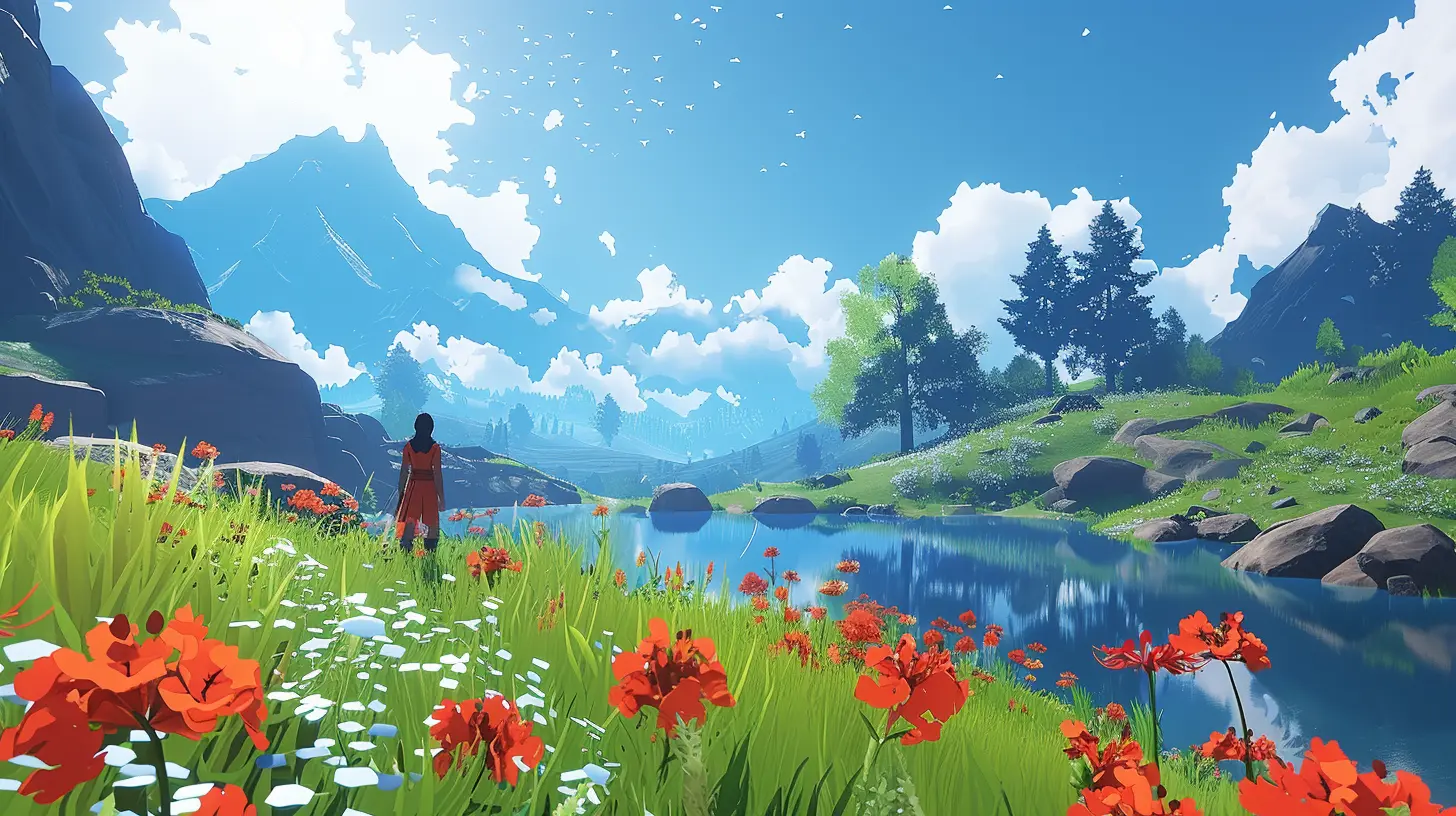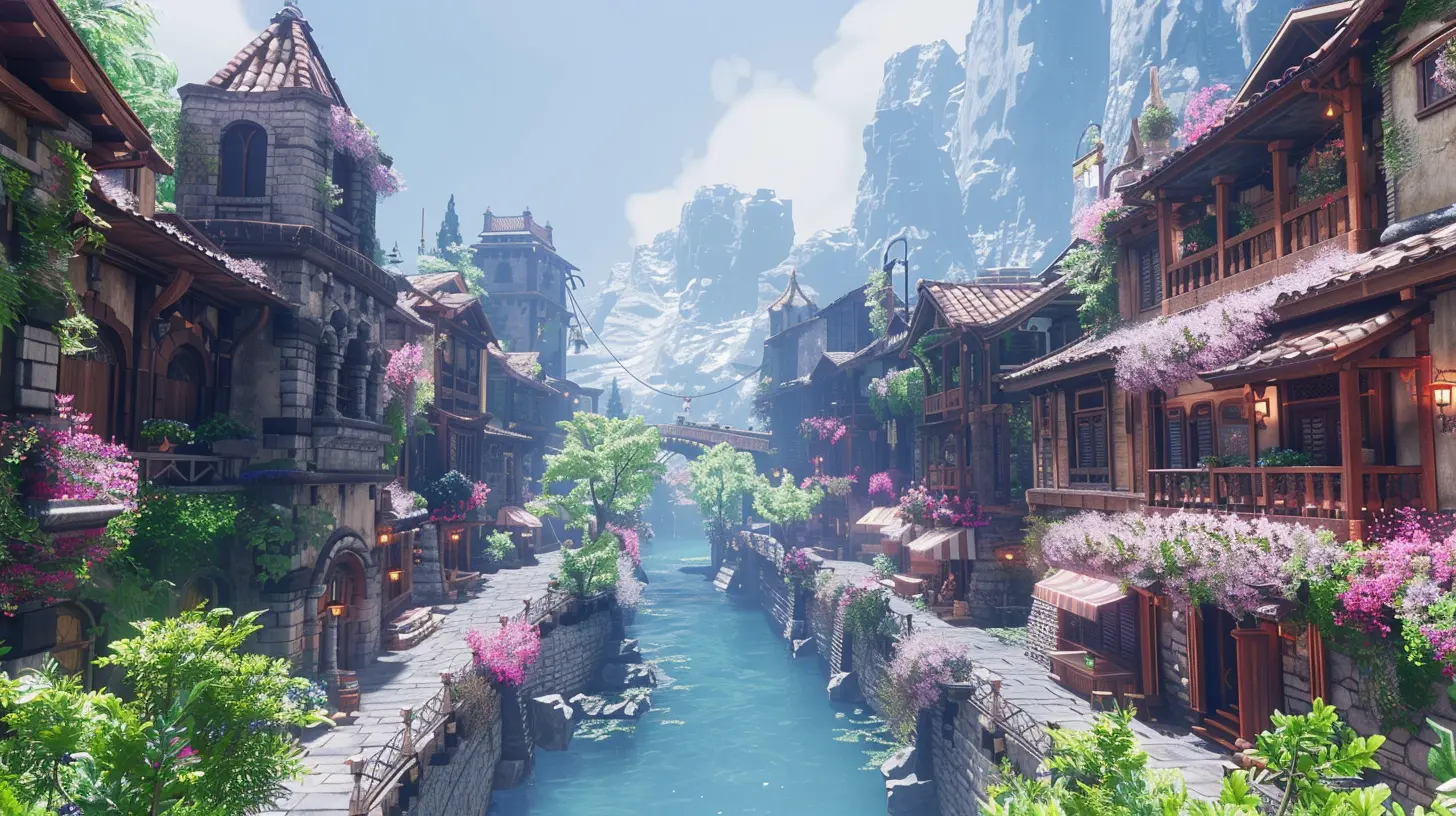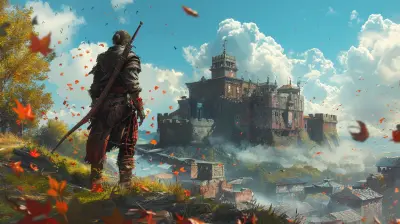How to Make Your Game Feel Alive: Designing Dynamic Worlds
4 March 2025
Have you ever played a game that felt so immersive you swore you could smell the fresh grass or feel the heat of lava bubbling nearby? Yeah, me too. It's like you step into a whole new dimension where the world isn't just pixels and polygons—it's alive. But here's the kicker: creating a game world that feels vibrant and dynamic isn’t some black magic that only wizards at major studios can conjure. Nope. It all comes down to clever design and a sprinkle of creativity.
So, put on your game designer hat (preferably one with a cool feather), and let's dive into the secrets of crafting dynamic worlds that don’t just exist but thrive. Whether you're an indie dev, a passionate modder, or just someone who loves overthinking video games (guilty), this one’s for you.
What Does It Mean for a Game to "Feel Alive"?
Let’s start with the obvious question: What does “feeling alive” even mean in the context of a game? Think of it like this: You're not just walking through a digital diorama; you're stepping into a simulated ecosystem. The trees sway when the wind blows, NPCs have daily routines, and even the wildlife seems to have a purpose. It’s where the world doesn’t revolve around you (shocking, I know), but feels like it’s got its own thing going on.Static environments are fine for some games—looking at you, Solitaire—but if you're aiming for immersion, the world shouldn’t just sit there, waiting for you to show up like an awkward guest at a house party. Instead, it should feel like it’s been chugging along, with or without you.
Step 1: Make NPCs More Than Walking Quest Boards
Let’s address the elephant in the room—or rather, the NPC in the tavern corner who’s been standing there staring at a mug for 50 years. If your game has non-playable characters, they need to have some depth. Think about it: in real life, people aren’t just there to give you tasks (although, wouldn’t it be great if someone handed you a grocery list and gave you gold coins for completing it?).Give Them Schedules
NPCs are way more believable when they behave like actual people with lives. Maybe the shopkeeper closes up at night to head home, or the blacksmith spends mornings gathering ore in the mountains. They don’t need to give you their entire life story (this isn’t an awkward first date), but a bit of routine goes a long way.Inject Personality
Nobody remembers Generic Villager #34, but everyone talks about the guy in The Legend of Zelda: Breath of the Wild who’s obsessed with crickets. Why? Because he’s hilariously quirky. Your NPCs don’t all need to be quirky cricket enthusiasts, but a dash of individuality makes them memorable.
Step 2: Add Dynamic Weather and Day-Night Cycles
Nothing screams “stale” like a world locked in eternal blue skies and high-noon sunlight. Dynamic weather and day-night cycles are like the glitter of game design—they add sparkle and make everything look cooler.Weather with a Twist
Rain doesn’t just have to be a visual effect. Maybe it makes roads muddy, slows travel, or even spawns certain creatures. Snow could block paths or require warmer gear. Remember those blizzards in Red Dead Redemption 2? Suddenly, the environment went from pretty backdrop to a legit survival challenge.The Passage of Time
Day turning into night isn’t just about pretty sunsets (though let’s be real—they do look amazing). Nighttime could mean more dangerous creatures roaming or certain activities becoming available, like sneaking into a guarded castle under cover of darkness. Basically, think of time as another tool to keep players on their toes.
Step 3: Populate the World with Wildlife
Let’s talk fauna. No, not just the hostile kind that wants to nom on your character’s face. I’m talking about animals living their best lives, doing their own thing. Birds that scatter when you run past, fish swimming in rivers, deer grazing in meadows—it’s the little details that sell the illusion.Ecosystems Matter
Designing ecosystems is like creating a food web in science class. Predators hunt prey, scavengers clean up leftovers, and everything has a role. If you’ve played games like Far Cry, you’ve probably experienced that heart-in-your-throat moment when a tiger suddenly interrupts a gunfight. That’s dynamic storytelling without a single line of dialogue.Step 4: Don’t Neglect the Soundscape
Ah, sound—the unsung hero of immersive gaming. A world without dynamic sound is like a movie without a soundtrack. Sure, you can see what’s going on, but you’re missing half the vibe.Ambient Noise and Sound Effects
Birds chirping, leaves rustling, distant thunder… these are the subtle touches that make a world feel alive. And don’t forget to make it reactive. Step into a puddle? Let’s hear a satisfying splash. Walk across crunchy snow? Cue that oh-so-satisfying crunch.Music that Adapts
Dynamic music that shifts based on what’s happening in-game is a game-changer (pun absolutely intended). One minute, you’re vibing to peaceful tunes while strolling through a village; the next, the tempo ramps up because a boss fight is about to ruin your day. It’s like the game feels your emotions.Step 5: Encourage Player Interaction with the Environment
Okay, this one’s a biggie. If you want a living world, let players actually interact with it. Nobody likes a pretty backdrop they can’t touch. Your world should encourage curiosity and experimentation.Destructible Environments
Nothing says “dynamic” like breaking stuff. Whether it's walls that crumble when hit or trees that topple when chopped, destructible environments scream “you’re making an impact.” Just don’t forget to balance it—nobody wants to accidentally knock over a whole village while sneezing.Hidden Secrets and Easter Eggs
Reward players for exploring! That random cave they stumbled into? Maybe it contains a rare treasure or a hilarious Easter egg. The satisfaction of finding something unexpected makes the world feel rich and layered.Step 6: Use AI to Simulate Life
AI isn’t just for creating hyper-competitive enemies who curb-stomp you into dust. It’s also a fantastic tool for making your world seem active. NPCs chatting with each other, wildlife reacting to predators, or even a group of bandits planning an ambush—these tiny AI-driven actions make your world feel less scripted and more spontaneous.Step 7: Let the World React to the Player
Here’s the thing: If the world doesn’t respond to the player's actions, it starts to feel a bit… stale. Imagine slaying a dragon in the middle of a bustling town and having the NPCs stand around like nothing happened. Yikes.Persistent Changes
If you blow up a bridge, it should stay blown up (unless magic or alien technology is involved). Permanent changes make the player feel like their actions matter. Think of it like leaving your mark on the world, minus the graffiti.Reputation Systems
Maybe NPCs treat you differently based on your actions. Help rebuild a town after a bandit raid? People greet you like a hero. Accidentally trample someone’s prized garden? Prepare for some stink-eye. These systems give weight to every decision, no matter how small.Step 8: Keep It Unpredictable
You know what makes a world feel dead? Predictability. If players know exactly what to expect, the magic fizzles out faster than a flat soda.Procedural Events
Random events that occur as you explore—like a traveling merchant passing by or a sudden rainstorm—make the world feel alive and surprising. Spontaneity keeps players engaged and eager to see what happens next.Bonus: Don’t Forget the Small Details
Sometimes, the smallest touches leave the biggest impressions. Maybe it’s graffiti on a wall hinting at a secret rebellion, or an NPC humming a tune that becomes the game’s main theme. These micro-details act like breadcrumbs, pulling players deeper into the world.Wrapping Up: The Magic of Dynamic Worlds
Creating a game world that feels alive isn’t easy, but oh boy, is it worth it. The key is to think beyond just how things look and focus on how they act. A dynamic world is a constantly shifting puzzle where players aren’t just observers—they’re participants in a living, breathing ecosystem.So, the next time you're designing a game or just appreciating one, remember: it’s the wind in the trees, the chatter of NPCs, and the occasional tiger ambush that make all the difference.
all images in this post were generated using AI tools
Category:
Game DesignAuthor:

Francesca West
Discussion
rate this article
9 comments
Heather McFarland
Great insights! Dynamic worlds enhance player immersion.
April 1, 2025 at 4:19 PM

Francesca West
Thank you! I'm glad you found the insights valuable. Immersion is key to engaging players!
Carson Potter
Wow, because who doesn't want their virtual world to feel alive? Next, we should probably teach pet rocks to fetch! But hey, if your game's trees start whispering, you might just win Game of the Year! 🌳🎮
March 26, 2025 at 4:22 AM

Francesca West
Haha, I love the idea of whispering trees! Making a game feel alive is all about those little details that immerse players. Thanks for the fun comment! 🌟
Otis McAdoo
What a fantastic read! 🌟 Breathing life into game worlds is essential for an immersive experience, and your tips are spot on! I can’t wait to implement these ideas into my projects. Here’s to creating vibrant, dynamic realms that players can truly connect with! 🎮✨
March 17, 2025 at 4:02 PM

Francesca West
Thank you so much! I'm thrilled you found the tips helpful. Excited to see how you bring your game worlds to life! 🎮✨
Ronan Young
Great insights! These tips will truly enhance game immersion and player engagement.
March 17, 2025 at 5:49 AM

Francesca West
Thank you! I'm glad you found the insights helpful for enhancing immersion and engagement. Happy gaming!
Kira McKay
This article beautifully captures the essence of dynamic world-building! The tips shared can truly elevate a game, making it immersive and engaging. Remember, it's the small details and interactions that breathe life into a game. Happy designing, and may your worlds thrive!
March 16, 2025 at 4:00 AM

Francesca West
Thank you! I'm glad you enjoyed the article and found the tips helpful. Wishing you the best in your game design journey!
Tempest McCarthy
Unlock the magic of dynamic worlds! By crafting vibrant environments and responsive characters, you’ll breathe life into your game, captivating players and turning their experience into an unforgettable adventure!
March 11, 2025 at 4:45 PM

Francesca West
Thank you! Creating dynamic worlds is essential for immersive gameplay, and I’m glad you found the article inspiring!
Zaren McKinstry
This article effectively highlights the importance of dynamic worlds in game design. However, it overlooks the balance between complexity and player accessibility. A world that feels alive must not only be intricate but also intuitive, enhancing immersion without overwhelming players.
March 10, 2025 at 3:38 AM

Francesca West
Thank you for your insightful comment! Balancing complexity and accessibility is indeed crucial for creating immersive dynamic worlds. I appreciate your perspective and will consider it for future discussions.
Isadora Stewart
Absolutely loved this article! 🌟 Designing dynamic worlds breathes life into games, making every corner an adventure. The tips are inspiring and practical—can't wait to implement them in my next project! Keep up the fantastic work! 🎮✨
March 9, 2025 at 4:58 AM

Francesca West
Thank you so much for your kind words! I'm thrilled you found the tips inspiring—can't wait to see how you incorporate them into your project! 🎮✨
Kathleen Alexander
Creating dynamic worlds is the heartbeat of game design! By infusing your environments with interactive elements and rich narratives, you can transport players into vibrant experiences. Embrace creativity and let your imagination flourish—together, we can craft unforgettable adventures that resonate with every player!
March 5, 2025 at 5:41 AM

Francesca West
Absolutely! Engaging environments and compelling narratives are essential for immersive gameplay. Let’s keep pushing the boundaries of creativity to bring players unforgettable experiences!
MORE POSTS

When to Jump Into an Early Access Game: Timing Is Key

Exploring the Most Ambitious Projects in Early Access

Exploring the Open World: How Exploration Rewards Players in MMOs

The Importance of Transparency in Early Access Development

Fresh Releases That Are Dominating the Charts

How Mobile Games Are Transforming Educational Learning

Why Community-Made DLCs Deserve More Love from Developers